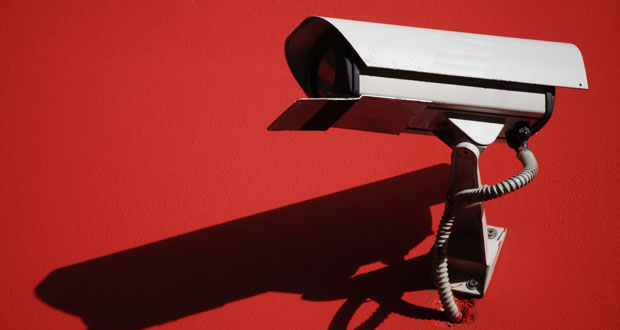Research commissioned by security technology integrator NW Security Group reveals a host of benefits for FMs who invest in the CCTV upgrade revolution, but they may need some expert help advises NWSG MD Frank Crouwel
Many organisation’s offices, manufacturing facilities and warehouses operated with significantly reduced numbers of staff during the pandemic. This meant the need for remote monitoring and remote management of facilities increased. But now that more CCTV systems are on the network (and perhaps in the future even in the cloud), it’s possible for these cameras to be accessed by middle and senior managers to track operational activities via the internet from their home office.
In a NW Security Group England-wide study carried out earlier this year, a third of construction firms anticipated CCTV systems being used for remote management more than before/pre-pandemic, and 28 per cent of all firms with over £10 million turnover anticipated wider use of CCTV cameras for remote monitoring this year.
Another consideration for those running CCTV systems is the increasing potential of unlocking additional operational value by integrating CCTV with other building management systems already on the network.
Firms are actively exploring tighter integration of CCTV systems with access control, fire and intruder alarm systems for example. However, when considering tighter integration, it’s worth thinking first about which operational requirement is demanding it, if any.
POWER OF THE CLOUD
We also researched medium and large-sized firms running CCTV systems throughout the country to gauge their appetite for migrating the management of CCTV systems into the cloud. We found well over half (58 per cent) of UK companies were planning cloud migration of their video security systems this year.
In some hotspot sectors the numbers are even higher: take the wholesale distribution and retail sectors where 80 per cent are planning CCTV system migration into the cloud during 2021; or manufacturers – where 78 per cent were already migrating or planning CCTV system migration into the cloud this year.
Cloud migration projects present huge opportunities for FM firms to offer advice, IT capabilities and ultimately enhanced remote monitoring capabilities if they have the skills or partnerships to deliver advice and capabilities.
CCTV FOR COVID SAFETY
Also stimulated by the pandemic, there has been an increased demand for the addition of facial recognition video analytics to premises’ CCTV cameras to enable contactless access control as building managers strove to reduce high usage touchpoints such as access control card pads which could stimulate increased transmission of COVID-19. Over half (52 per cent) of the businesses told us they were exploring use of cameras to identify and automatically provide access to employees and pre-registered visitors. In fact, half of medium and large-sized businesses across England are already exploring the use of video analytics in their existing cameras to manage social distancing in offices and 48 per cent are going further to deploy directional detection analytics to enforce one-way systems and the use of specific doors for entering and exiting. Others are using cameras for mask detection and (less successfully) temperature checking at entrances.
VIDEO ANALYTICS
We are also seeing an explosion of other video analytics offerings, many of which can be uploaded into some of the later network cameras. This can add new functionality to existing devices – thereby upgrading their functionality with relatively little capital expenditure.
However, here too it’s worth talking to a specialist security systems installer as, if you are not careful, badly configured video analytics software could actually increase false alerts which will itself create an additional drain on security management resources. We looked into this problem in a second study of businesses with CCTV systems which we ran in May 2021 and found that 93 per cent of firms reported excess false alarms coming from their CCTV systems. Over a quarter (27 per cent) attributed these false alerts to incorrectly specified and configured
video analytics software. A further 29 per cent blamed excess false alerts on poor lighting of cameras and 41 per cent blamed their false alerts simply on obstructions on their CCTV cameras including dirt and
spider’s webs.
The irony is that much of the new video analytics, if deployed judiciously and configured correctly, should reduce false alerts in monitoring centres considerably. More than that, they should help you detect threats that you’d otherwise miss, as well as tighten security and offer multiple non-security operational benefits.
SPECIALIST OUTSOURCING
As new cyber threats increase, the stakes associated with cyber breaches and the dangers of GDPR non-compliance are pushing visibility on risk exposures in these areas right up to board level. In reaching the attention of the board, we also found there was a growing propensity for larger companies to outsource the monitoring and management of video surveillance systems to manage those risks better.
Our study found that 29 per cent of medium and large-sized businesses have already fully outsourced CCTV monitoring and management and one in 10 companies now have a declared policy of working with an external partner in this area. Here too, FM providers have an opportunity to lead these discussions going on at the highest levels of their customer-base.
It’s clear there is a huge opportunity to deliver additional value for FM security providers from helping their customers to upgrade and manage their CCTV systems.
We specifically asked what were the top three skills which businesses were looking for from any outsourced security provider today? The answer in order came:
- 43 per cent demand 24/7/365 helpdesk facility to support CCTV systems
- 38 per cent would select an outsourced partner based on evidence of CCTV & network video surveillance capabilities and pedigree
- 32 per cent want to see Cloud CCTV migration knowledge and experience.
Finally, it’s clear from our findings that strong abilities in helping them to deploy video analytics offerings to reduce false alerts, increase efficiencies, and unlock new capabilities is rapidly becoming the 4th key criteria for selection.
OUTSOURCING ADOPTION EDGE
What’s also noticeable is that firms which have retained CCTV system management in-house are not deploying major video analytics in their security systems as quickly as those with an outside expert on board.
For example, 62 per cent of firms with external support had successfully deployed ANPR (Automatic Number Plate Recognition) across their CCTV system, whereas that number was much lower at 48 per cent ANPR analytics adoption for in-house managed systems.
Adoption of Optical Character Recognition (OCR) video analytics, often used to track deliveries and goods pallet movements in and out of warehouses, is deployed in 62 per cent of firms where an outsourced security partner is on board and only in 41 per cent of firms which still run all security systems in-house.
Many CCTV systems operating inside commercial premises are ripe for major upgrades over the next few years, offering a huge opportunity to add value by making systems improvements that deliver new business intelligence and an array of operational benefits.
The survey confirms the importance of outsourcing to the experts in order to ensure a successful CCTV System upgrade.





